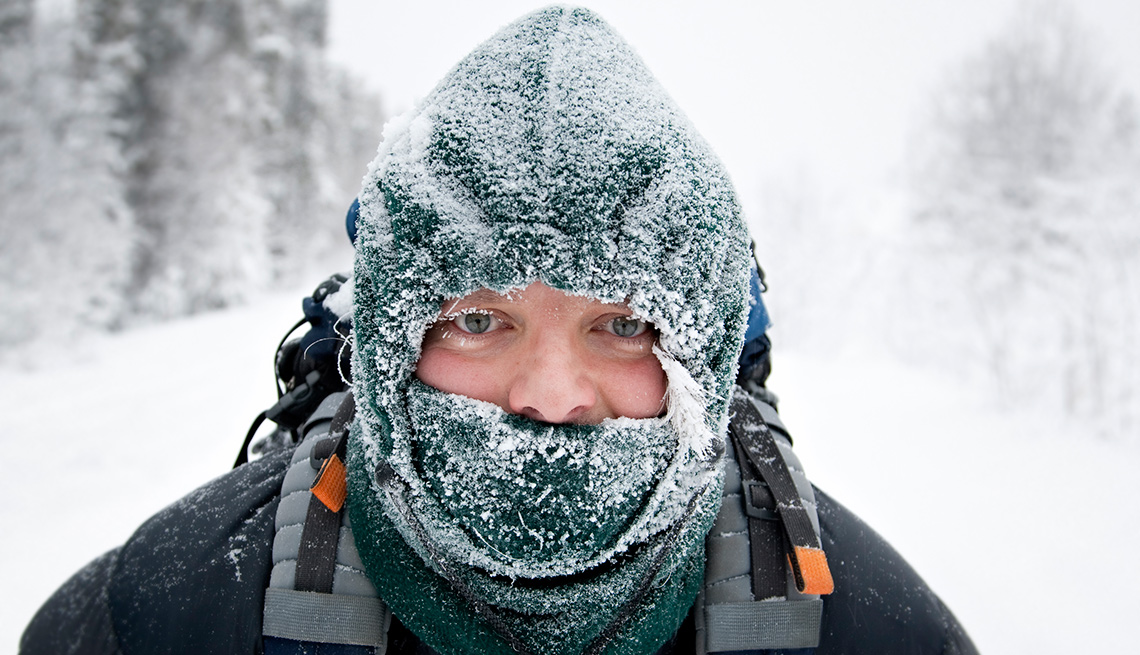
- Select a language for the TTS:
- UK English Female
- UK English Male
- US English Female
- US English Male
- Australian Female
- Australian Male
- Language selected: (auto detect) - EN
Play all audios:
TREATMENT Seek medical care if you detect symptoms of frostbite, the CDC says. It is also important to first determine whether the victim is showing signs of hypothermia, which is a more
serious medical condition caused by prolonged exposure to cold weather and requires emergency medical assistance.Davis says frostbite heals the way other wounds heal, but if the frostbite
is too severe, people need treatment from a doctor. DO If there are no signs of hypothermia and immediate medical care is not available, the CDC recommends the following steps to treat
frostbite: * Get into a warm room, and remove wet clothing. * Immerse the affected area in warm but not hot water. (Keep the temperature at a comfortable level for unaffected parts of the
body.) * Warm the frostbitten area using body heat, for example inserting frostbitten fingers in your armpit. * Stay warm under blankets and layers of dry clothing. DO NOT * Walk on
frostbitten feet or toes unless absolutely necessary; this increases the damage. * Rub the frostbitten skin with snow or massage it — you may cause more damage. * Use artificial heat
sources such as a heating pad, heat lamp, stove, fireplace or radiators. The affected areas of your skin are numb and could be easily burned, according to the CDC. It is important to
remember that home remedies are not substitutes for proper medical care. Frostbite should be evaluated by a health care provider, and hypothermia should be treated as a medical emergency.
BE PREPARED The CDC recommends taking a first aid and emergency resuscitation course to prepare for cold weather health problems and preparing your home and car for winter emergencies.
“Oftentimes it’s people who get stuck in the snow” who get frostbite, Davis says. She says to be especially careful of loved ones who have dementia. “Someone might have Alzheimer’s disease
and sundowns and wanders outside,” she says. “They might not be dressed for the cold weather and they can be unaware that they are in danger.” Children playing in the snow, those
experiencing homelessness and people who work outdoors, such as in construction, are also at risk. “Usually it’s accidental, so it’s about public health awareness,” Davis says. KEEPING PETS
SAFE IN EXTREME COLD Megan Lorenz / Getty Images People often think pets are less susceptible to cold because of their fur, but that’s not true, according to the American Veterinary Medical
Association. Here are some tips for keeping your pets healthy in frigid weather. 1. KNOW YOUR PET: Cold tolerance varies for pets based on their health, coat, body fat and activity level.
Older dogs, like older humans, can be more susceptible to the cold. “Older dogs and dogs with metabolic issues cannot regulate their temperature as well, so they are more prone to problems
than young and healthy dogs,” says Caroline Cervelli, a veterinarian with the Breckenridge Animal Clinic in Breckenridge, Colorado. She says that although frostbite is not common in dogs, it
can occur even at temperatures above freezing and if an animal is wet. Paws, tails, noses and ears are the areas most prone to frostbite. She recommends limiting time outdoors for senior
dogs and short-coated breeds. 2. CHECK THOSE PAWS: Check your dog’s paws frequently for cracks or bleeding, which are signs of cold-weather damage. Dogs that are walking or running in snow
will stop to chew on snowballs in their paws due to pain or discomfort, Cervelli says. Trimming the hair between dogs’ digits can help avoid snowball buildup, though Cervelli cautions that
owners should use clippers, never scissors, to do this, unless they are experienced in grooming. “The severity of snowballs can depend on the type of snow and temperatures,” she says. 3.
SWEATER WEATHER: If your dog has a short coat or seems to be affected by the cold, consider having it wear a sweater and keeping several on hand. “Sweaters and boots are a great idea for
short-coated breeds and very small dogs,” Cervelli says. Make sure the sweater is dry, because a wet one can actually make the animal colder. You can also use booties to protect dogs’ paws,
but make sure they fit properly. Cervelli says northern breeds, such as huskies, malamutes, chow chows and akitas, generally do not need sweaters because they have a thick undercoat that
helps insulate them, but even the northern breeds can get frostbite in certain conditions. 4. WIPE THEIR PAWS: Deicers, antifreeze and other chemicals can be toxic. Wipe down pets’ paws
when they come home to protect them from poisoning when they lick their paws. Consider using pet-friendly deicers. _Kim Hayes is a senior producer for AARP and has written on social justice
issues for numerous organizations, including the National Organization for Women, the Robert Wood Johnson Foundation and the Lawyers’ Committee for Civil Rights Under Law. She served as
editor of the _Native American Report_ newsletter. Elizabeth Agnvall contributed to this update._






